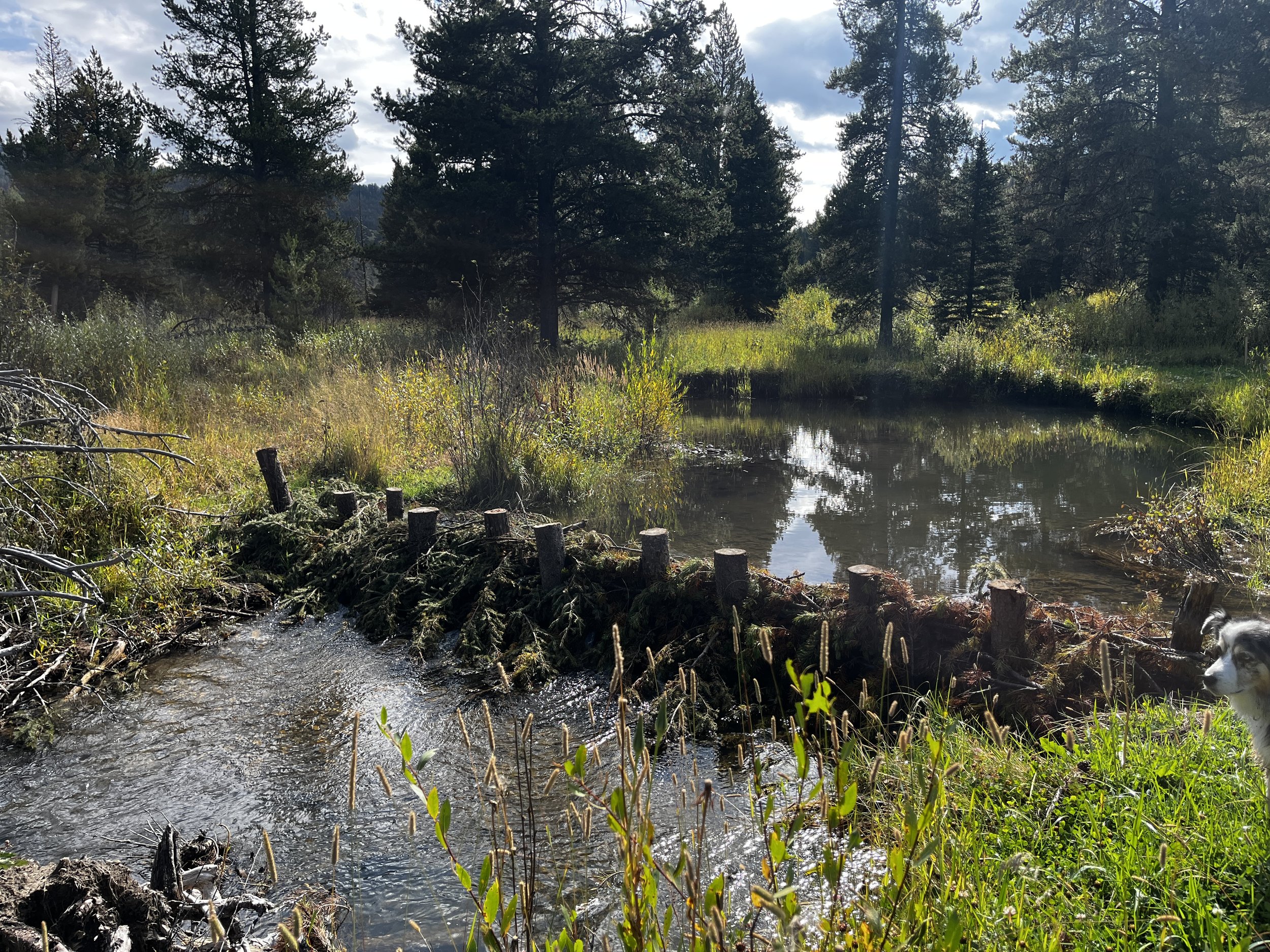cONSERVATION
The Jack Creek Preserve was created to permanently protect 4,500 acres and create an important link between two sections of the Lee Metcalf Wilderness. We steward and manage this landscape to increase biodiversity and maintain and improve habitat. The landscape is also used for plant and wildlife research, and conservation education.
HUNTING
An important part of our mission and programming includes educating others about the critical role that hunting plays in conservation and the historic elements that have informed today's wildlife conservation and management.
WILDLIFE aND HABITAT
One of the most important resources the Preserve possesses is its incredible wildlife populations. The Preserve boundary was specifically drawn in order to connect two separate sections of the Lee Metcalf Wilderness and to protect important wildlife corridors from future development. At the heart of our mission is protecting regional wildlife habitat as well as teaching others about wildlife conservation.
In 2024 we continued to work with Ranch Resources to better manage our 4500 acres for improved forest health and wildfire mitigation. Project objectives have included restoring aspen stands, improving grassland and sagebrush meadow habitat, increasing understory forage diversity, reducing fuel accumulation and hazards, and improving potential firebreaks.
Additionally, in 2023, 6,300 feet of barbed wire was removed from the Preserve by 17 volunteers from Unstrung Heroes. Unnecessary barbed wire can be dangerous to all wildlife and impedes wildlife movement.
WATER
Many important water resources are located on the Preserve, including alpine lakes and streams, Hammond Creek, and much of the Jack Creek watershed. Monitoring the health of these resources is important to the Foundation, so we have maintained a monitoring program in partnership with the Madison Watershed District for several years.
In partnership with the Madison River Foundation, in 2023, the Jack Creek Restoration and Enhancement Project was completed throughout the uppermost half mile stretch of Jack Creek on the Preserve. Work included strategically placing habitat structures at six locations and the construction of three beaver dam analogs. These structures mimic the benefits of natural beaver dams, increasing habitat complexity, aquifer storage and connectivity, reducing bank erosion during spring runoff, and overall improving riparian and aquatic habitat.
A Beaver dam analog strucutre in jack creek as a part of the jack creek restoration and enhancement project
NOXIOUS WEEDS
Much of the area around and including the Preserve was logged in the past, free ranging cows frequented the Preserve, and neighboring properties continue to be developed. With these kinds of impacts, noxious weed infestations are inevitable. In order to combat weeds on the property, the Jack Creek Preserve Foundation has worked with Ranch Resources to develop a comprehensive noxious weed management plan and they provide recommendations annually. Commercial spraying, more targeted backpack spraying, and use of bio-controls such as knapweed root boring beetles and a rust used on thistle, have been part of our efforts. For several years in a row, in July we host an amazing effort during a weed Co-op which includes the Forest Service, Madison County Weed Board, Madison Valley Ranchlands Weed Committee, and Big Sky Resort. Innovative weed management is important to the Preserve and will continue in the future.
SCIENCE AND RESEARCH
Jack Creek Preserve offers a valuable venue for partners to conduct research. We invite nonprofits, local, federal and state agencies, schools, students, and others to use our property for research opportunities. Please contact us if you are interested in accessing the Preserve for your research.
Species of Concern
The JCPF preserves biodiversity by conserving and enhancing habitat for more than 80 Species of Concern, through the Range Management Program. The United States Department of Interior Fish and Wildlife Service division has identified the grizzly bear, Canada lynx, greater sage-grouse, and whitebark pine as species who inhabit critical habitats, which are defined as:
“Specific areas (i) within the geographic area occupied by a species, at the time it is listed, on which are found those physical or biological features (I) essential to conserve the species and (II) that may require special management considerations or protection; and (ii) specific areas outside the geographic area occupied by the species at the time it is listed upon determination that such areas are essential to conserve the species.”
Montana State University Land Resources And Environmental Sciences Department
Unlike most other ecosystems, high elevation environments in mountains currently experience relatively low levels of invasion by non-native plants. The Mountain Invasion Research Network (MIREN: http://www.mountaininvasions.org/) was founded in 2005 to understand the reasons for this, document patterns and understand processes of plant invasions in mountains, and support preventive measures against potential future invasion. It has grown to represent 20 mountain regions including every continent. MIREN is a boundary organization bridging local to global scales, as well academia and conservation practitioners, with activities ranging from globally replicated experiments to networking and outreach.
We have conducted globally replicated, standardized surveys and manipulated experiments in the MIREN regions. Our surveys have shown that non-native plant richness consistently declines from low to high elevation, irrespective of the elevation extent and other environmental differences among regions. Our most recent manipulated experiment has just completed the field component in many parts of the globe: in Montana we conducted the experiment at Jack Creek. We simulated climate warming by transplanting whole plant communities from high to low elevation. For the last four years we have been evaluating 1) changes in the above ground vegetation, 2) growth rate and fecundity of target species, 3) changes in soil biota and 4) decomposition rates. These data are now being collated for future publication.
Visit their website for more information: http://weedeco.msu.montana.edu
Integrated Monitoring In Bird Conservation Regions
Every year in late spring and summer, biologists and technicians travel across the mountains, prairies and deserts of the western U.S. to survey birds under the Integrated Monitoring in Bird Conservation Regions (IMBCR) program. The program, coordinated by Bird Conservancy of the Rockies, is one of the largest of its kind in North America, stretching across public and private land in many states in the western United States.
Jack Creek Preserve is a continuing partner with the Intermountain Bird Observatory (IBO) in Montana and has participated in the IMBCR program since 2011. What we learn through the IMBCR program informs management decisions and contributes to the big picture for bird and habitat conservation. Data gathered as part of the program are available at no cost through the Rocky Mountain Avian Data Center: http://rmbo.org/v3/avian/Home.aspx.
Strengths of the IMBCR program include a statistically rigorous design based on random sampling, a broad network of partners that support the program and its reach across many states and boundary lines, including public and private lands. Partners include (but are not limited to) the U.S. Forest Service, Bureau of Land Management, National Park Service, state wildlife agencies and organizations such as the Bird Conservancy of the Rockies, the University of Montana Avian Science Center and the Wyoming Natural Diversity Database.









